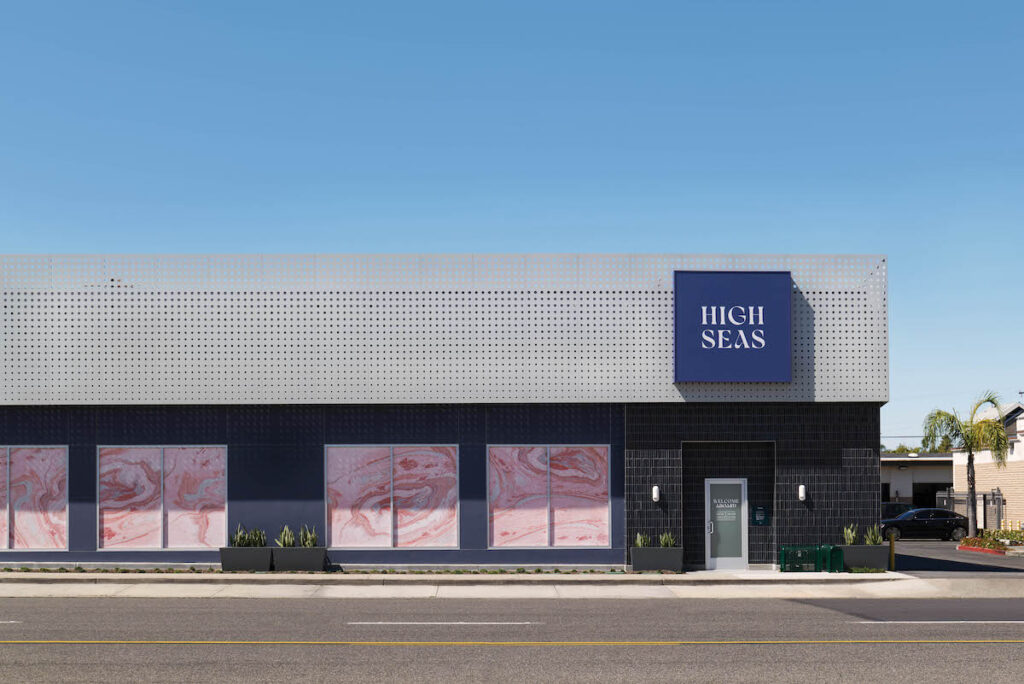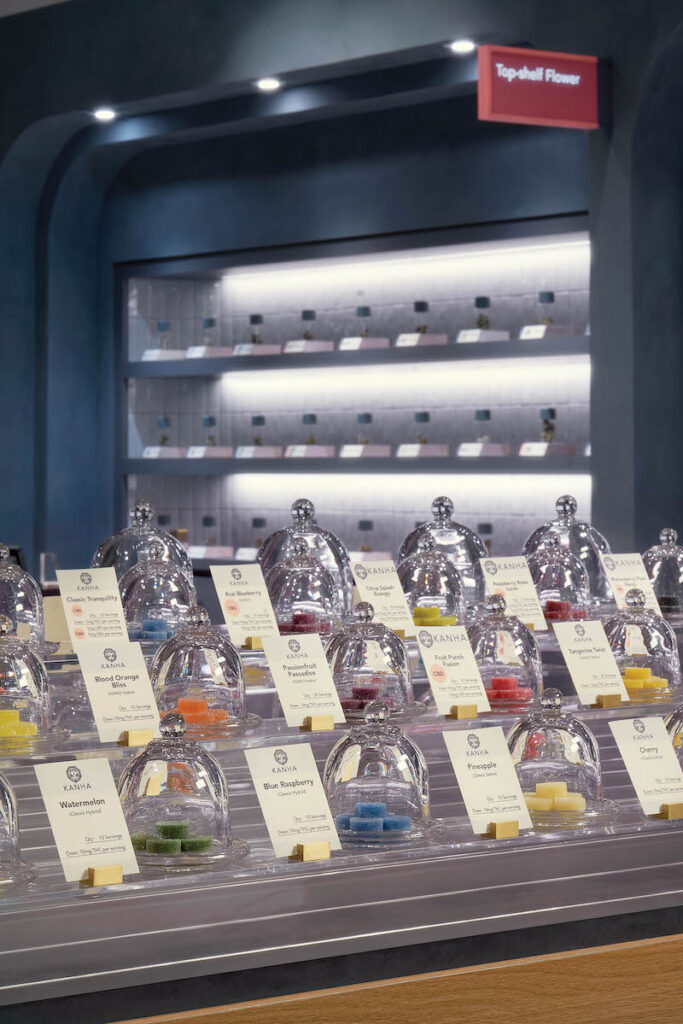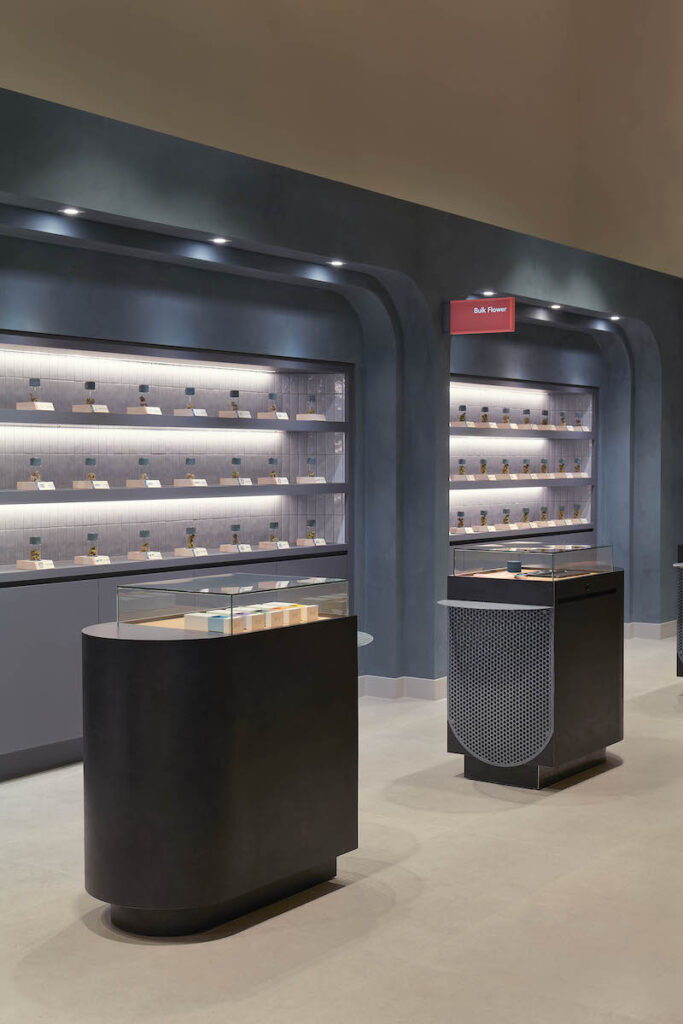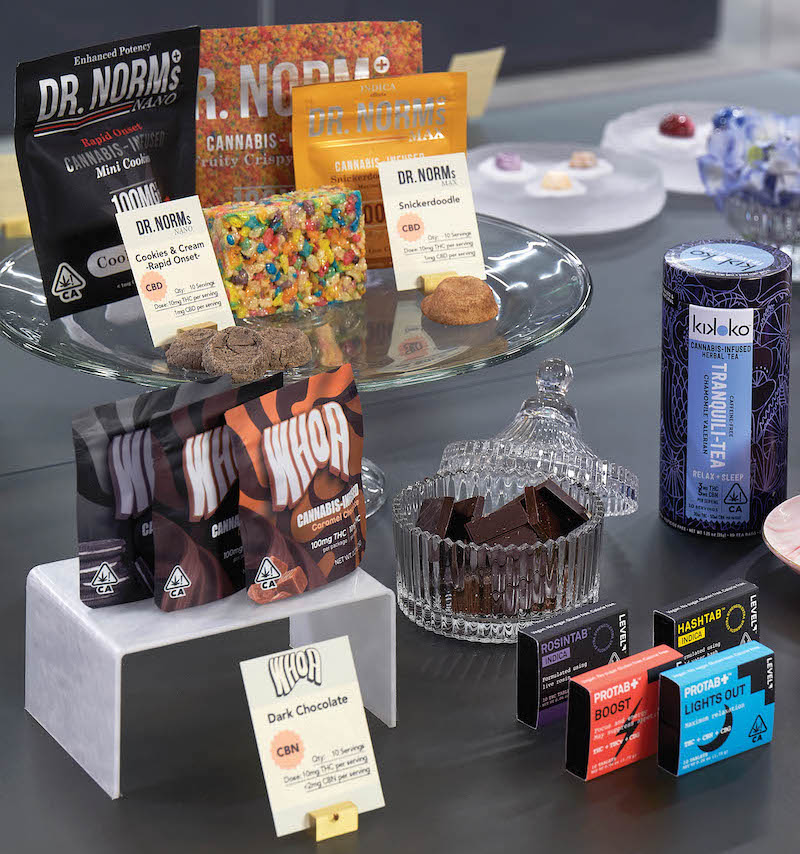Historically, the country has looked to California for clues about cannabis. After all, the Golden State was the first to legalize medicinal use and among the first to go recreational. California also gave us advocacy legends Brownie Mary and Denis Peron and cultivation mecca the Emerald Triangle. But despite all the plant progressiveness, one region in the southern part of the state remains mired, to a great extent, in prohibition: Orange County.
High Seas in Costa Mesa changed the status quo in Orange County, but not without a fight. After waiting months to obtain a license and enduring a lawsuit, police raids, and a legal settlement that wasn’t entirely satisfactory, High Seas became the first dispensary to open in the county outside Santa Ana—previously the only OC city where residents had voted to allow dispensaries to operate. Life behind the “orange curtain” is notoriously conservative compared to the majority of the state. As a result, most of the county’s 792.9 square miles constitute a cannabis desert. But with High Seas’ opening in April, it looks like reform is slowly but surely catching on.
Customers step into the ocean-themed dispensary and embark on a journey of the senses. Guiding guests through the space with clean scents, creative brand displays surrounded by flowers, and the sounds of nature whispering from motion-sensor speakers, the shop is less like a classic Santa Ana in-and-out dispensary and more akin to the luxury traditional retailers on swanky, nearby Bristol Street.

“It’s a higher-end experience,” said co-founder Michael Moussalli. “Customers come into the lobby from one of two entrances, where they’re greeted and ID-checked. But rather than being rushed onto the sales floor from there, customers are encouraged to peruse the lobby, where several of our brand partners rented cubbies to display their marketing materials and products.”
The featured displays, which were developed by co-founder Rachel Xin, share the lobby with a muted merch shelf offering beach-town fashion, a 400-gallon fish tank, and a virtual 3D hologram greeter who educates visitors about the space and its offerings while they await their turn to browse.
Kombucha and cold brew are on tap in the lobby, and customers are encouraged to enjoy the opportunity to relax until their assigned “specialist” comes to collect them. From there, it’s straight to the sales floor, where consumers receive a one-on-one tour through the unique environment, equipped with two more fish tanks, soothing mood lighting, and products displayed in a manner accessible even to those new to the plant.

“Everything [except the kiosks in the lobby] is laid out by product type—not brand,” Moussalli said. “It’s easier for people to understand that way. We made sure to lay out the space in a way that doesn’t look overwhelming or cluttered; that’s why we don’t have a lot of packaging on display. We want people to buy based on their conversations with our specialists and what they feel is best for their needs.”
Convenience is the name of High Seas’ game—a tactic the founders said they picked up from luxury retail. All specialists carry iPads so they can place orders easily as customers browse, ensuring their bag of goodies is ready for them when they reach the checkout counter.

“From our virtual greeter to our directional speakers where people can hear waves crashing or birds chirping, we’ve aimed to create a soft, welcoming ambiance for folks,” Moussalli said. “Our store has an older demographic, and most of our customers just don’t want to feel like they’re shopping at a dispensary. They want to feel like they’re at South Coast Plaza [a nearby high-end mall], so that’s the experience we aim to deliver.”
The team worked closely with Remedy Design Group Principal Designer Cindy Lam to ensure the store’s design allows for that sort of journey: seamless, worry-free, and elevated.
Lam was brought onto the development project in 2021 at a time when the High Seas team knew only that they wanted to create an “engaging, experiential retail space.” They were more specific about what they didn’t want, but they needed Lam’s help to transform their business goals into a tangible, functional product.
“I came from retail and hospitality, so I’ve dealt with a lot of product displays in my day,” Lam said. “My team’s whole process was to jump straight in, the same way we’d lay out any other retail store. Product merchandising was the driver for design. Aside from aesthetics, we worked closely with the [dispensary’s] team to figure out what sort of products they planned to carry and whether it would be more grab-n-go, sit-n-stay, or some mix of the two.”
Starting at the sales counter, Lam and her team worked backwards, using the High Seas team’s desired end to the journey to understand how the space should look. The store’s founders answered an extensive questionnaire, which helped Lam and her crew figure out which merchandise categories would be offered, what percentage of products would be showcased at a time, and how the products would appear to consumers as they entered the expansive sales floor.
One of the key features in creating positive customer response is Remedy Design Group’s signature Scenting Jars, which are designed so consumers can stop and smell the flowers.

“I’ve been designing cannabis stores since early 2017,” Lam said. “Through that process, our team ended up developing our own line of jars specifically for cannabis so people can smell the product outside of its packaging. High Seas’ opening happened to be in parallel to our jar launch, so they adopted a wall of Scenting Jars for consumers to explore.”
Because the jars encourage consumers to explore at their own pace, they fit perfectly with High Seas’ goal of helping customers to relax and enjoy their journey.
“This concept is about letting people discover for themselves,” Lam said. “We wanted to give people an intimate opportunity to discover products while they learn more about the plant. Novice shoppers might not have felt comfortable going into a traditional dispensary. With that in mind, we wanted this store to say, ‘We’re not limiting ourselves to everyday seasoned smokers. We welcome the new and the old, all while catering to people with higher expectations for their shopping experience.’”
Lam and her team took cues from fashion, food and, perhaps most notably, coffee.
“When you walk into a Starbucks, what do you immediately smell?” Lam asked. “Beans. It entices you. Then you look through the glass case and see hot croissants on display. Before you know it, you want to buy. We wanted the cannabis experience to be similar.
“The industry is evolving every day,” she continued. “There are constantly new products rolling out, and it can be quite overwhelming for consumers. Our idea was to simplify things by designing a space that is clean, simple, and beautifully showcased.”
The High Seas team was completely on board with Lam’s suggestions from the beginning, she said, since one of the founders’ chief aims was to offer consumers a bespoke experience with an expertly curated product selection.
“There was a lot of trust between our teams, which is so important in this process,” Lam said. “With cannabis, you have so many people coming from different backgrounds. Some are new to the industry but seasoned in marketing or real estate; others are the opposite. But with everyone bringing something different to the table, it’s rare for someone to place their full trust in you.”
The dispensary and design teams worked closely with an architect, taking their time to determine precisely how the space would come to life.

“We cater to those who want education—not just products,” Moussalli said. “We’re not a store that targets folks who are looking for the best deal in town. We’re targeting folks who are like, ‘Hey, we want to know more about that product. Can you talk to us about it?’ Our store is less quick pitstop and more of an attraction.
“I’d much rather see 200–300 people per day and have them thoroughly enjoy the store without feeling rushed than see 600 people just to get deals out the door,” he added.
While the OC remains somewhat stuffy and resistant when it comes to convenient cannabis access, High Seas is a first step toward reform in a way that is palatable for the local demographic.
“We often have customers come in and say, ‘If I knew there was a store like this, I’d have started shopping for cannabis a long time ago,” Xin said. “And the true testament to that? We’ve been open for less than thirty days, and have already seen 20 percent of those customers return at least a second time.”
The Costa Mesa store is the first in what Moussalli and Xin hope will become a chain. But they intend to be picky about future locations.
“We’re always looking at new cities that might introduce cannabis legislation, but at the same time, our store is very specific and we’re not willing to compromise that for a location,” said Moussalli. “I’d love to see High Seas in [OC cities] Newport [Beach], Dana Point, or Laguna Beach. However, legislation is still far behind for retail cannabis, so for now, we’re just keeping an eye on the landscape.”













[…] The pre-opening crisis created an early interest with cannabis media, and it helped secure coverage of its opening. […]